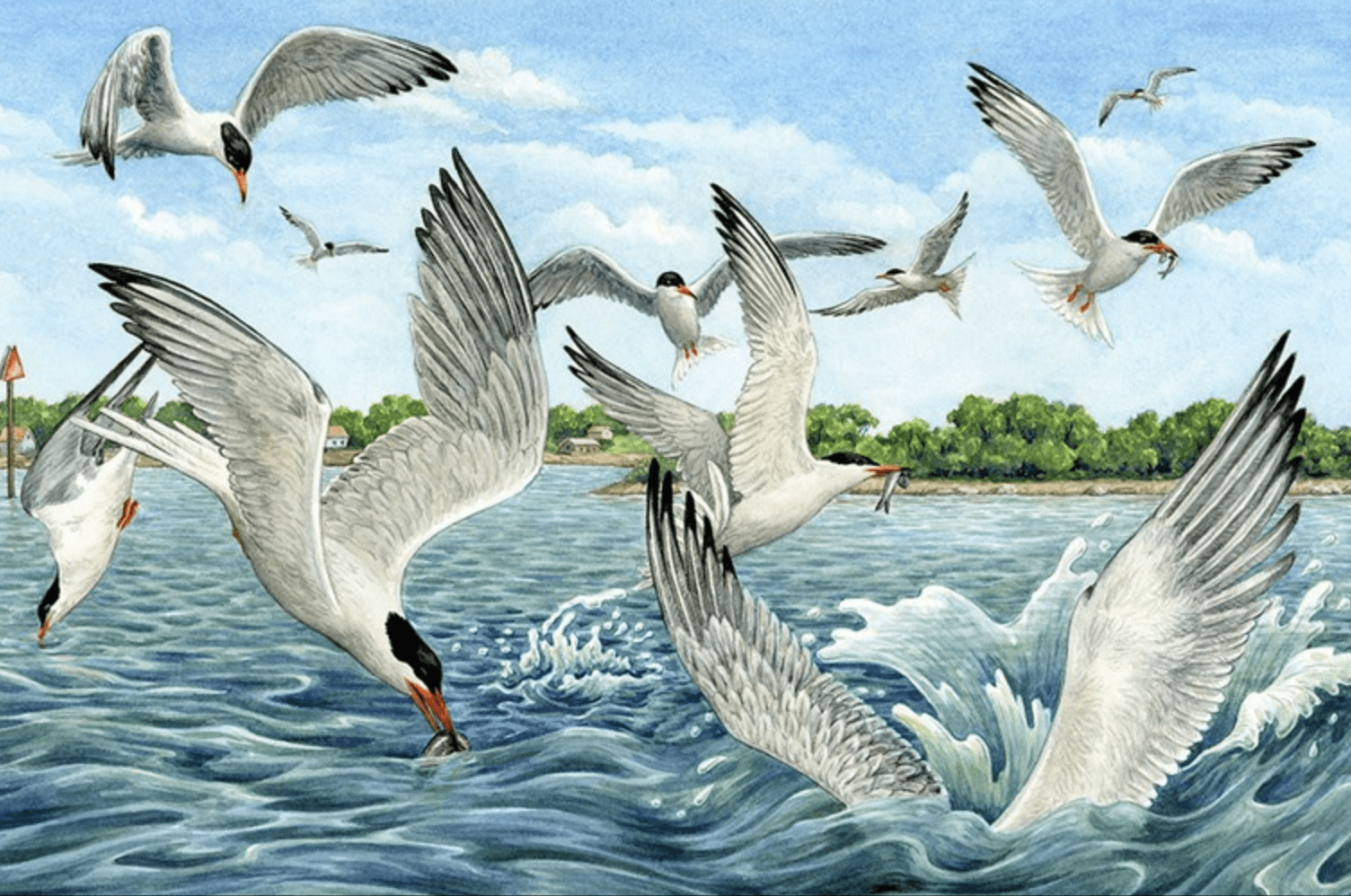Search Posts
Recent Posts
- Vinny Paz to be inducted TODAY into the International Boxing Hall of Fame – CES Boxing June 7, 2025
- In the News… quick recap of the week’s news (6.7.25) June 7, 2025
- Burn with Kearns: Strong without the spend: How scraps became strength tools – Kevin Kearns June 7, 2025
- Rhode Island Weather for June 7, 2025 – Jack Donnelly June 7, 2025
- How to advocate for threatened properties: The Heritage Alliance of Pawtucket June 7, 2025
Categories
Subscribe!
Thanks for subscribing! Please check your email for further instructions.

ART! Natural Science Illustrators “Rivers to the Sea” at One Capitol Hill
The Atrium Gallery at One Capitol Hill is featuring 3 RI artists as part of an educational art exhibit by the Guild of Natural Science Illustrators, New England Chapter, called Rivers to the Sea, currently on display at the Atrium Gallery at One Capitol Hill on the main floor of the state’s Administration Building in Providence.
Artwork by three Rhode Island artists, Albert Pointe, Riverside; Melissa Guillet, Johnston; and Frances Topping, Charlestown, are featured in the show. Pointe has three illustrations, and they are of Dobsonfly Nymph, Stonefly and Alderfly larvae; Moose; and Moon Jellyfish. Guillet’s is a Zebra Clubtail Dragonfly, and Topping’s is a North American River Otter.
On viewing the installation at the state’s gallery, which is managed by the RI State Council on the Arts (RISCA), Randall Rosenbaum, Executive Director of the state’s arts agency, said, “We are proud to present this work by an organization that blends arts education with natural science. The display provides a range of scientific illustrations, and we are grateful to the Guild for sharing with Rhode Island 13 of its members’ works. I hope Rhode Islanders make a point to visit this exhibition in our state’s gallery space.”
The artists are:
- Melissa Guillet, Johnston, R.I.
- Albert Pointe, Riverside, R.I.
- Frances Topping, Charlestown, R.I.
- Carol Schwartz, Manchester, Conn.
- Jeanette Compton, Hamden, Conn.
- Dorie Petrochko, Oxford, Conn.
- Patricia Cassady, Middleborough, Mass.
- Wendy Chadbourne, Chapter president, Lakeville, Mass.
- Sau-Mei Leung, Clinton, Mass.
- Mark Lefkowitz, Sharon, Mass.
- Nancy Minnigerode, Marstons Mills, Mass.
- Peggy Rambach, Andover, Mass.
- Nanci Worthington, Southfield, Mass.
The Guild’s N.E. Chapter was founded in 1999 to provide encouragement for scientific illustrators through networking, technique workshops and public education. The members represent a wide range of fields including natural science, scientific, botanical, medical and veterinary illustration. They are art educators, freelance illustrators, staff illustrators, backyard scientists and students who paint, sketch, sculpt or work digitally. Read more about the Guild, click here.
Exhibit details
What: Rivers to the Sea by the Guild of Natural Science
When: Open to the public, weekdays, 8 a.m. to 5 p.m., through Jan. 7.
Where: The Atrium Gallery, first floor of the state administration building, One Capitol Hill, Providence
The Atrium Gallery at One Capitol Hill was developed to exhibit the work of Rhode Island artists in the State Capitol Complex. It hosts exhibits on a rotating basis, in partnership with several state agencies & organizations. The art gallery enhances Capitol Hill as a destination point for visitors, as well as for the many people who visit Administration offices or attend conferences at One Capitol Hill. It also enriches the work environment for the hundreds of state workers who spend their workday in the building. For more information, click here.
The Rhode Island State Council on the Arts is a state agency supported by appropriations from the Rhode Island General Assembly and grants from the National Endowment for the Arts, a federal agency. RISCA provides grants, technical assistance and staff support to arts organizations and artists, schools, community centers, social service organizations and local governments to bring the arts into the lives of Rhode Islanders. To learn more visit http://www.arts.ri.gov.
Statement from the Guild of National Science Illustrators
When man first started to colonize the world, one major determinant to where we established our communities was the presence of and access to water. If you look at any modern maps, you can’t help but notice that our major cities are in close proximity to water. This phenomenon is very much the same with the natural world. If you take a hike anywhere here in New England, you will find an abundance of biodiversity near sources of water.
The land is divided by rivers, streams and creeks, each with their own watershed. A watershed is a land area that drains and channels precipitation back to the sea in a constant cycle. Each of these watersheds are unique – supporting a vast array of ecological systems. These ecological systems support a wide variety of biodiversity which changes as you travel from the upland headwaters of a river all the way to the termination into the sea.
All this biodiversity relies on the precious resource of clean water flowing past without obstructions. The watersheds provide critical life support to the animals and plants living in them, including drinking water, migration routes, nurseries, and irrigation for native plants which provide sources of food and shelter as well as prevent erosion of the land. It is a complex and interconnected web of communities upon which the actions of man can have serious and long-lasting impacts.
The members of the Guild of Natural Science Illustrators New England Chapter are celebrating the biodiversity of watersheds in their chosen media, to help bring awareness to the fragile communities which rely on healthy watersheds all through New England. No matter how far you physically live from a body of water, you are having an impact on the watershed that drains into that body of water. The overall health of these fragile communities, and ultimately our own, relies on healthy watershed systems.
